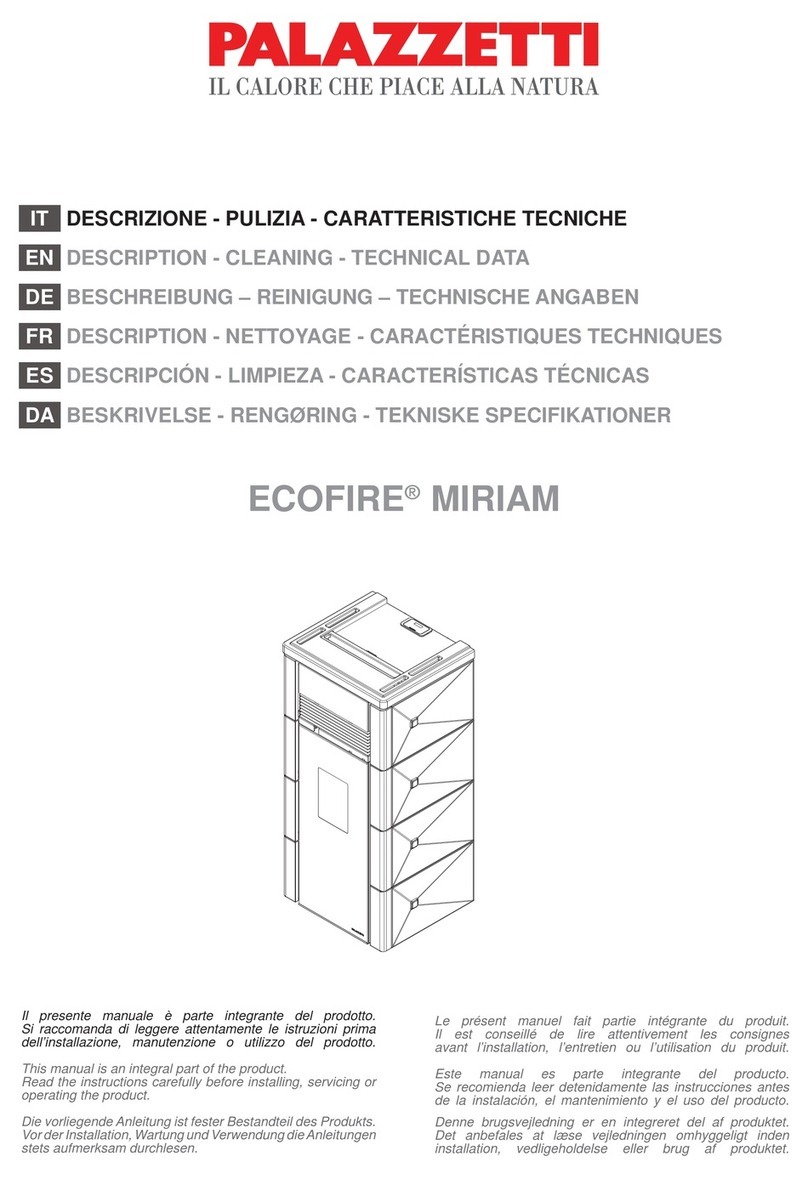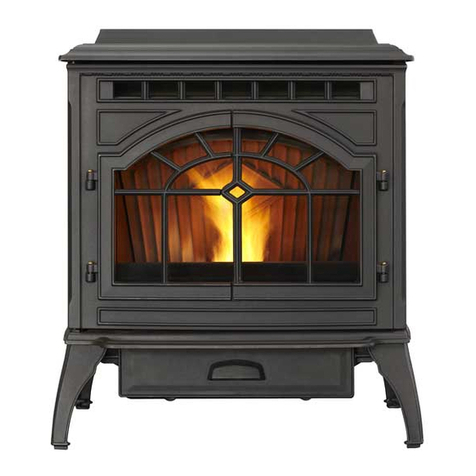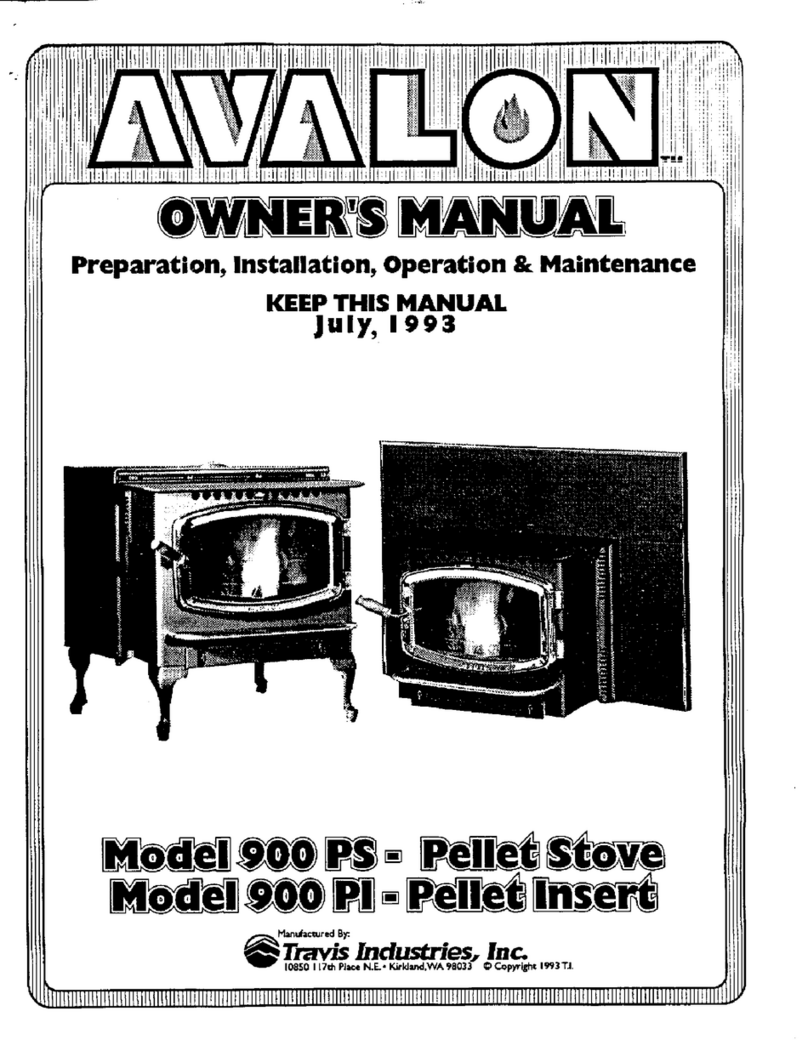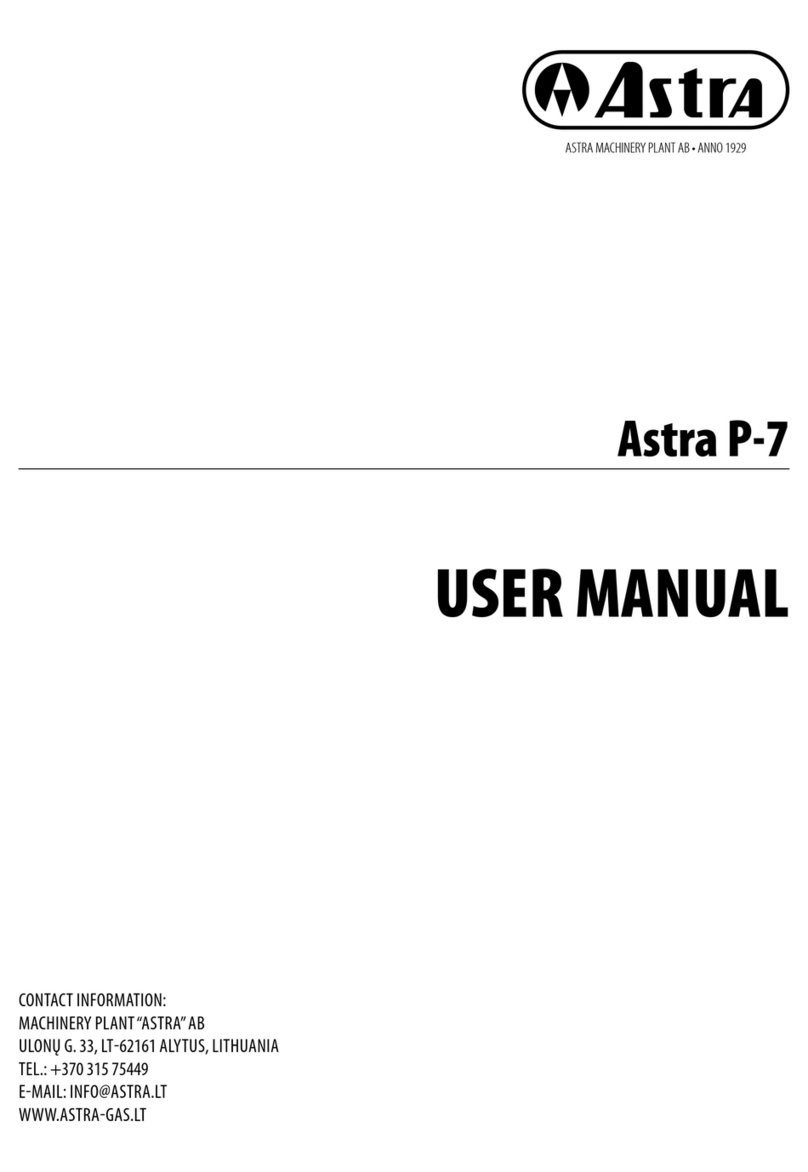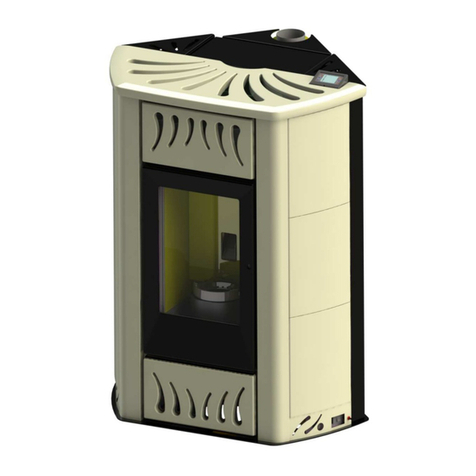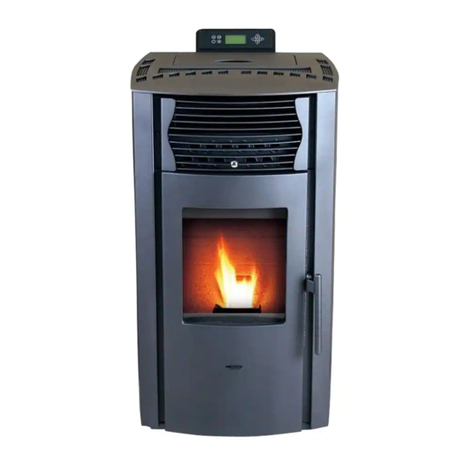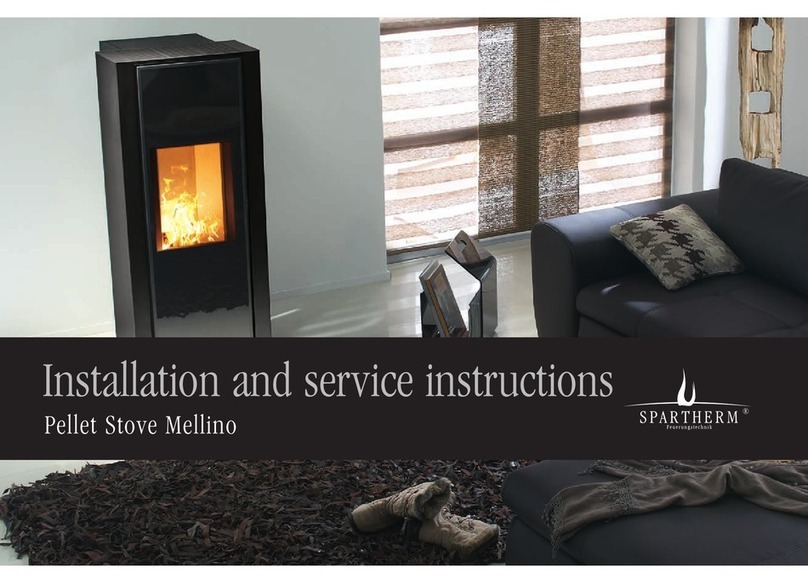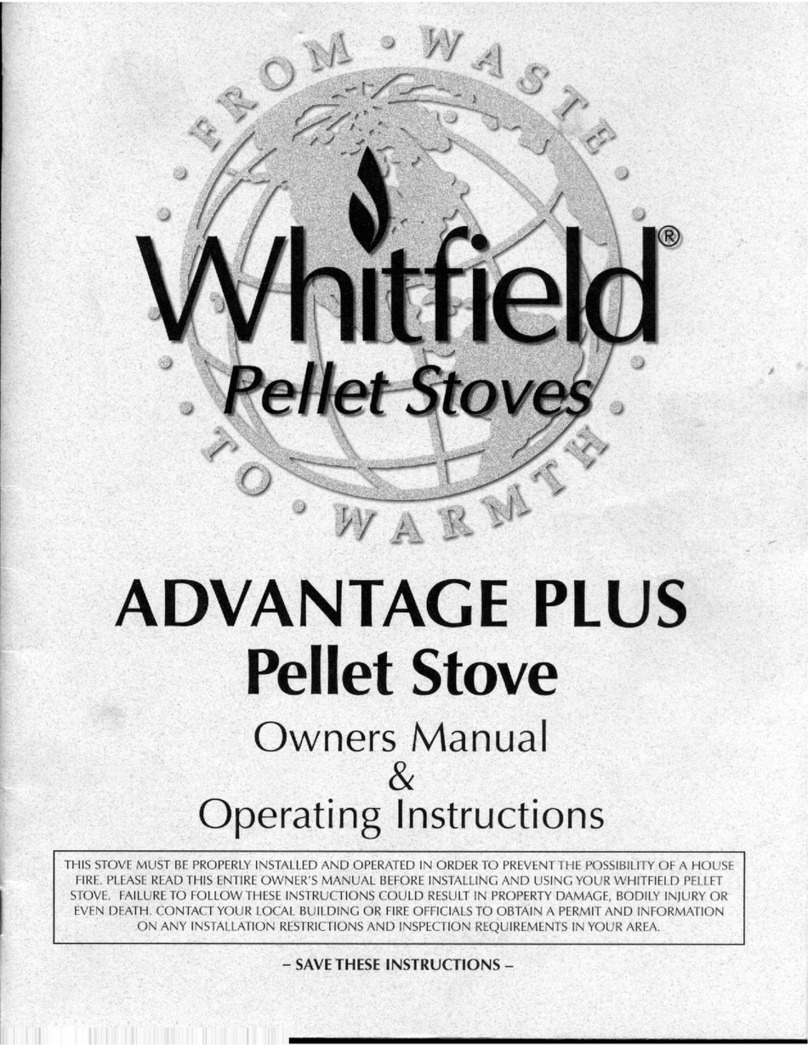Stove
Damper
Settings
FREESTAND STOVE DAMPER
>\
The "push-pul1"damper rod is locatedon the lower right side of the Freestand model stove. The
I
starting
proper damper setting, to use as a startingpoint,
is
2".
It
is
set by pullingthe damper out all the
way and measuringthe distance between the side panel and the inside surface of the set collar.
fj)
If adjustment
is
required, loosenthe set screw on the set collar, with the allen wrench provid-
ed.
The collar will now slide freely on the damper rod. After adjustments have been made,
tighten the collar set screw. The damper rod must now be pushed in until the set collar con-
tacts the side panel.This completesthe damper setting.
As stated the
2"
setting
is
the recommended "sfartingpoint"for your stove. You may needto
(shown pulled-out)
change this setting dependingon the venting configuration, site elevation or the brandof pellets
being used.
Fine Tuning:
This
is
the process that will provide the proper air-to-fuel ratio. If your flame
is
redlorangewith evidenceof soot at the top of the flame, you need more air. Pull the damper out until
the flame becomes yellow and beginsto "dance". If the air blows pellets out of the grate or puts the
Operating
fire out on low settings, you havetoo much air. Push the damper farther in. When adjustingthe
Position
damper, short 114" changes should be used. Run the stove appx.
30
minutes beforeadditional
damper adjustmentsare made. When your particular damper settinghas been established, the
set collar should be loosened and positioned againstthe surface of the side panel. The collar
set screw must be tightened at this time. This
is
a safety feature to protect against accidental
damper closure. Ifthe damper is accidentally pushedintoofar, pellets can pile-up inthe
grate. Inextreme cases pellets can accumulate back up inthe feed tube. Pelletscan smolder
(Damper
Pushed
In)
and produce smoke inthe house. Once the damper is set for your particular fuel and installa-
tion, itwill not need to be readjustedunless a different type of pellet fuel
is
used. If the flame
begins to look lazy, with a redlorange colored flame, do not immediately adjust your damper.
First check for ash build up either inthe grate, below the grate or inthe vent system. These conditions
8
can restrictthe combustion air flow and upset the air-to-fuel ratio. Remember to always shut your stove down and allow it to
?
cool completely prior to cleaning. NOTE: Ifthe proper flame cannot
be
achieved with the dampercontrol, adjustmentof the
trim controls maybenecessary. (see page
7)
INSERT STOVE DAMPER
The damper plate, for the Insertmodel Quest "Plus",
is
packed with the product's accessow com-
oonents. The damoer olate needs to be installed before insertingthe stove in the fireolace.
-
NO
tools are required:or this installation. Simply slide the damper into the slot betweenthe blow-
er and the rear of the firebox. This
is
located on the right side ofthe
stove near the exhaust tee, (see photoA). The plastic knob will be
attachedto the damper plate alongwith two nylonflat washers.
I
Removethe plastic knob and on of the nylon flat washers. The
=
threaded stud, on the damper plate, can now pass through the slot
,
i
-,-
-
-
-
1
inthe right side shroud panel. The washer and knob can now be
-
-
#.
-
-
>.
-
-
i
attached.The damper assembly should be locked in position by
-
L
1
tightening the black knob. To adjust the damper the knob must be
-
I
unscrewed slightly.With the knob slightly loosethe damper will
1
?.4j
slide freely inand out. A total damper travel distance of
3"
is pro-
!
I*
,
.;,
7
vided. The recommended starting point for the damper
is
1"
open,
!
..
L.
"Z
~~
.
(see photo
8)
Your stove may require adifferent damper setting
PHOTO
A
1
',
'
i
dependingon the venting, site elevation and type offuel beingused.
(damper pmition behind firebox)
!
-,
,
When the desired damper setting
is
found the black knob should be
. ..
\~%.S5
iu
threaded tight. This will securethe damper inthe proper location.
,I
B
,
.
-
--~
PHOTO
E
i
STOVE BREAK-IN
(recwnmendedStarting position)
lmporfantNofe:All stoves needto go through a break-in period. During this period, (appx.
4-8
bags of pellets), the auger motor and the auger feed screw needto break in to reach the specified
fuel feed rate. Expectthe fuel feeds and the flame appearance to be low during this time. The damper will needto be readjusted
after the break-in period. It
is
recommendedthat the stove be monitored during this period. Due to the fact that the pellet feed
increases throughthe break-in period, the fuel-to-air ratio could become imbalancedand pellets could pile up inthe grate.
a
Simply pullthe damper outfor more combustion air.
